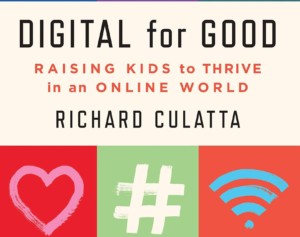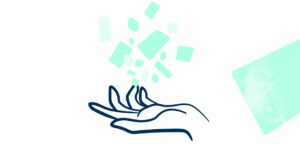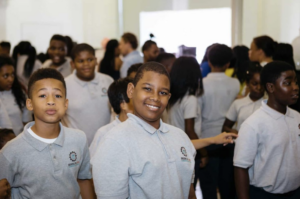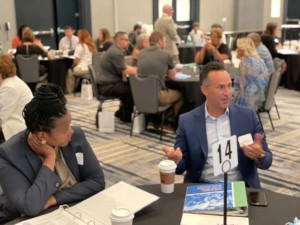Good Work: Urgency
Whatever you vividly imagine, ardently desire, sincerely believe, and enthusiastically act upon…must inevitably come to pass. –Paul J Meyer
We just witnessed something remarkable this week in Egypt—a persistent, largely peaceful crowdsourced revolution.
As someone interested in higher and more equitable student achievement, I wonder what we can learn from the last month. Specifically, what can education leaders do to create the urgency and persistence to launch and sustain a learning revolution?
As a former public school superintendent, I understand the illusion of control—people hold you responsible but there is not much you can actually control. The job has a lot more to do with creating reliable hope, hosting conflicting social interests in a constructive way, and rallying support for whatever you think can get done.
One desired outcome for superintendents is urgency around the goal of achievement. Urgency is a response to a crisis or an intense need, but it lacks the fear of panic and, with vision and passion, can be sustained through difficulty.
Fifteen years ago I attempted to launch a revolution. Shortly after introducing new district learning expectations detailed in a graphic web-based presentation during an exciting back-to-school rally in a giant convention hall, I began visited classrooms. I had hoped to see and feel urgency about higher standards but instead I saw the same thing that I had the year before: teachers working through the same curriculum in the same way with little evidence of the new standards. Naively I had assumed that teachers understood the standards, knew how to incorporate them, and had the time to do so. Wrong on all accounts, I remember wondering how to disrupt the customs, contracts, and cognitive complacency that seemed to block progress.
Three years later the pendulum had swung from complacency past panic to paralysis. We had incorporated the new standards in report cards, eliminated social promotion and set extremely high goals for the number of students at grade level. In our first principal’s meeting of the year my assistant and I looked around the room at deer in the headlights. Frozen by our customs and contracts, and struggling to align their belief systems with the new policies, our principals did not know where to start. Having assumed too much, we had to start over with a full day of conversations about our respective beliefs. We had to step back from implementation and build the capacity to lead by building a shared belief system.
Urgency requires a shared reality, an achievable desired future state, concrete plans to get there, and support along the way. The effective zone where real sustainable improvement takes place is a balance between complacency and paralysis. If you do not stretch enough results do not improve. Push too hard and you get resistance and fear. Finding and keeping a balance is an art of pushing and listening.
The revolutions in Egypt and Tunisia were mobilized by social media more than charismatic leaders. Social media has made it easier for ideas to go viral, for associations to form, and for people to feel safety in numbers. The uprisings also reflect the fact that it’s easier to mobilize a revolution against something than in favor of something new.
Social media and free web 2.0 tools are new non-coercive change levers in education. Viral adoption by teachers promotes and supports new practices. Where students have the ability to blend their own education by choosing online courses, they change the system bottom-up.
Leading complex systems is, well, complex. Top-down approaches haven’t worked very well (in part because of the dysfunctional form of school governance in the US). The lesson of the last month is the potential of empowering bottom-up non-coercive social-media driven change.
[The Good Work weekend series is based on journal entries from my days as a public school superintendent]








0 Comments
Leave a Comment
Your email address will not be published. All fields are required.